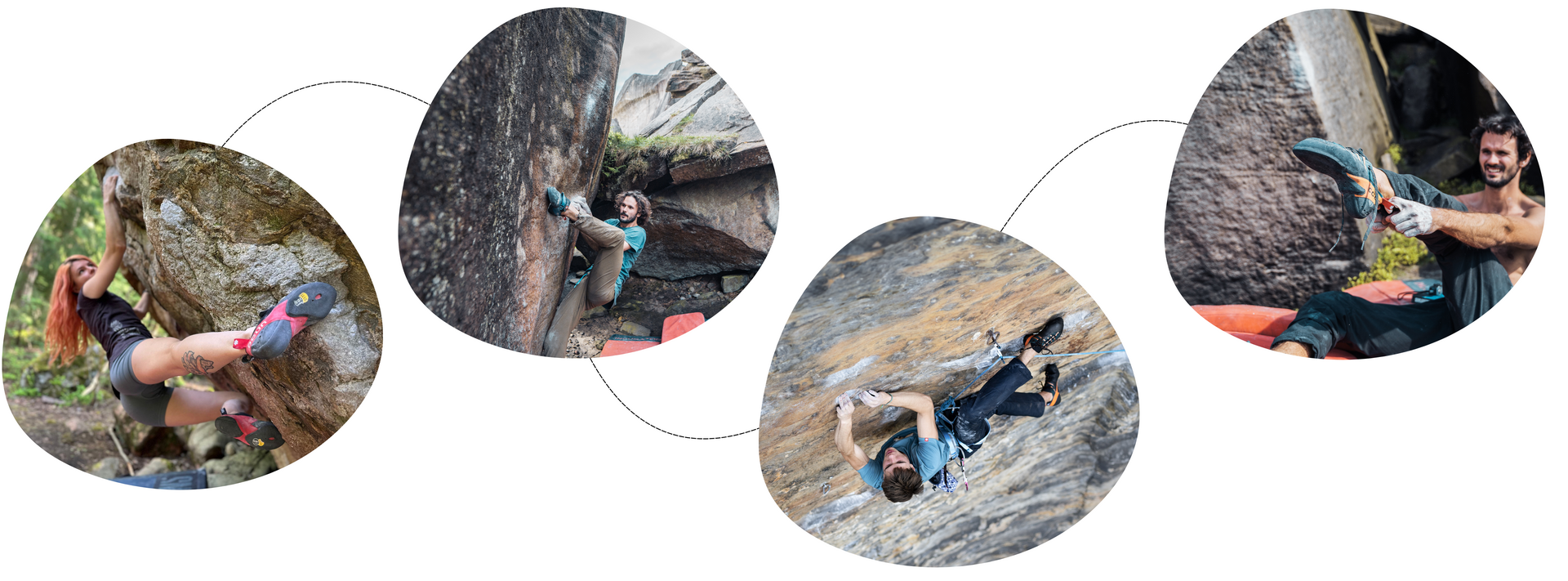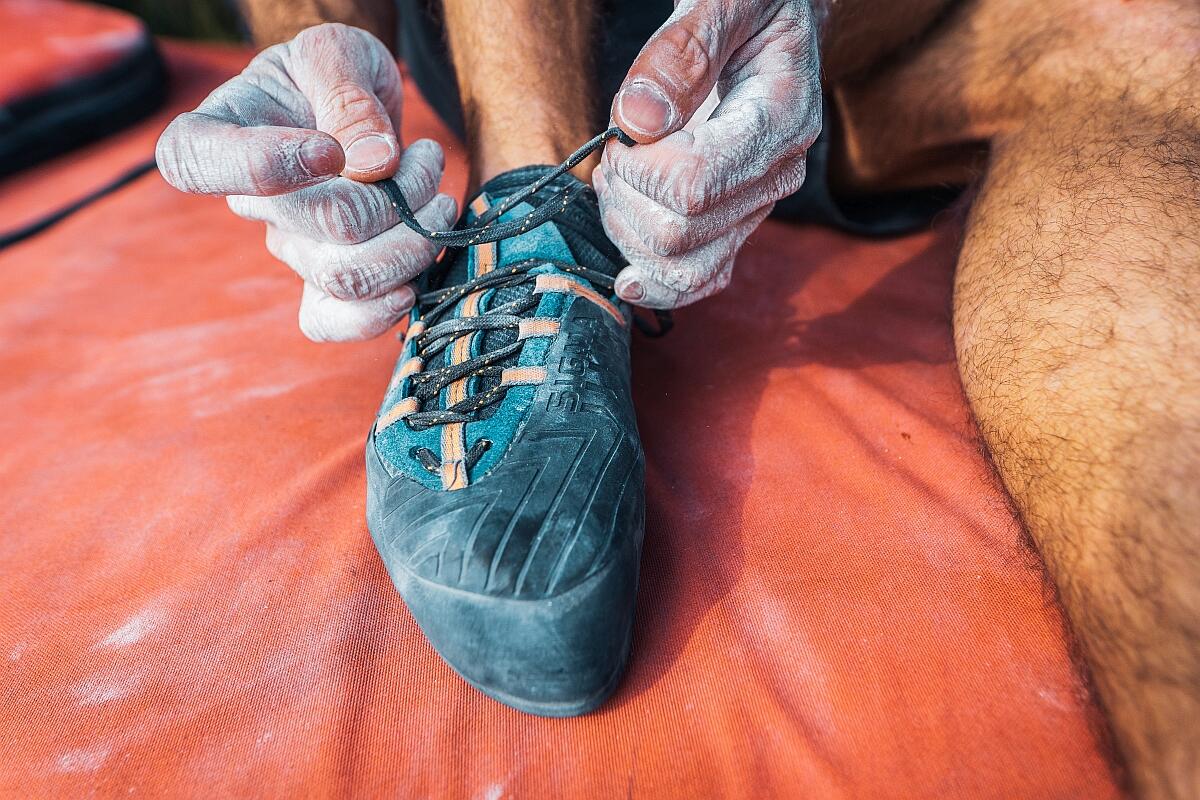Big, comfy shoes or small, tight ones? Aggressively downturned, asymmetrical, or flat and neutral? Laces, Velcro, or slip-ons? Shoes for sandstone, cracks, multi-pitch, bouldering, or sport climbing? Choosing the right pair isn’t easy – and once you add in foot shape and toe type, the decision gets even trickier. This is why we’ve prepared a clear guide to help you navigate the key features and find what works best for your foot type. Because…
„One style never fits all.“
Every Foot is Different – Foot and Toe Shapes
When choosing climbing shoes, size alone isn’t enough. Just as important are the shape of your foot and the length of your toes. These determine the right last – the form on which the shoe is built. A properly fitting shoe considers both the width of your foot and the unique shape of your toes, giving you support, precision, and comfort while climbing.
Foot Types
The shape and width of your foot strongly influences how a climbing shoe fits and performs. That’s why it’s important to pick a model that matches your specific foot type.
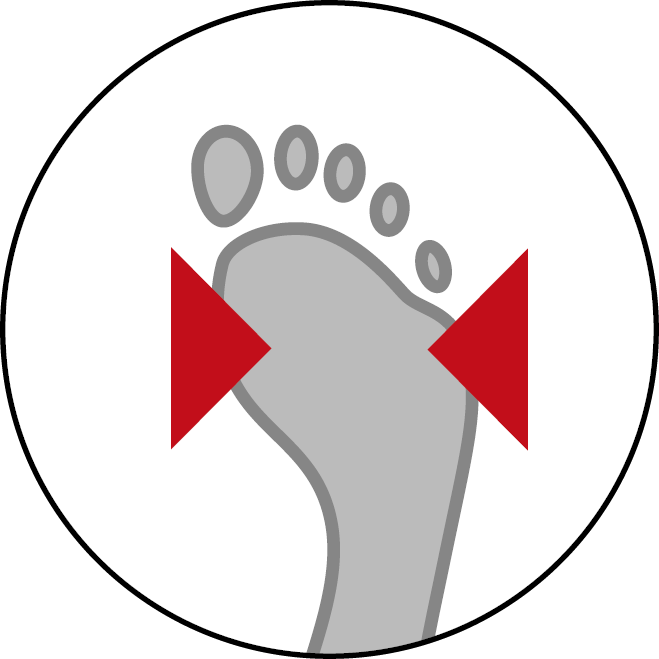
Narrow
Slim foot with a narrow instep and heel. Needs a low-volume last that wraps snugly and holds.
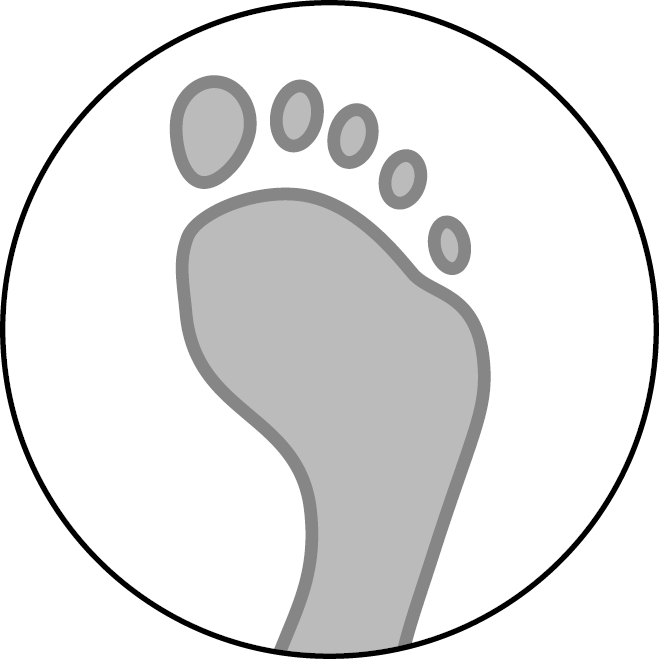
Regular
A balanced, average foot shape. Fits most standard climbing shoe lasts comfortably.
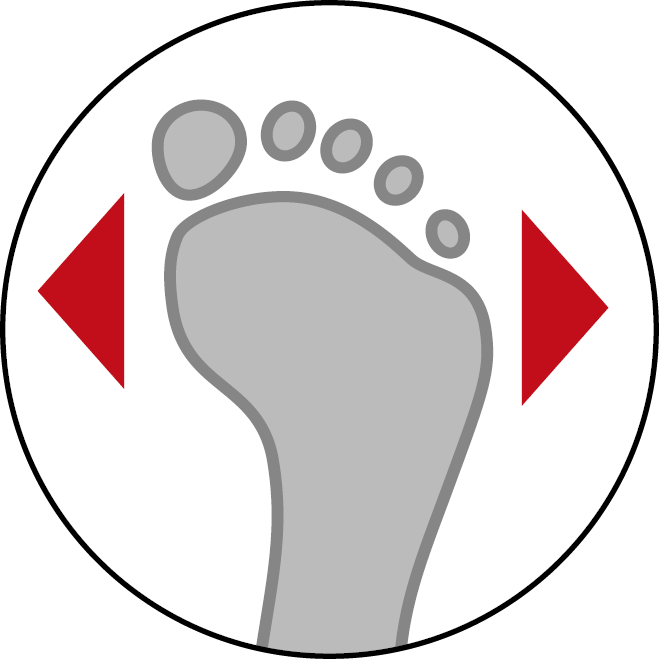
Wide
Broader foot, often with a higher instep. Requires a wider last with more volume (HV = high volume).
Toe Shapes
Different toe shapes need different proportions in the toe box of the shoe. Paying attention to your toe shape can help you find a better fit.
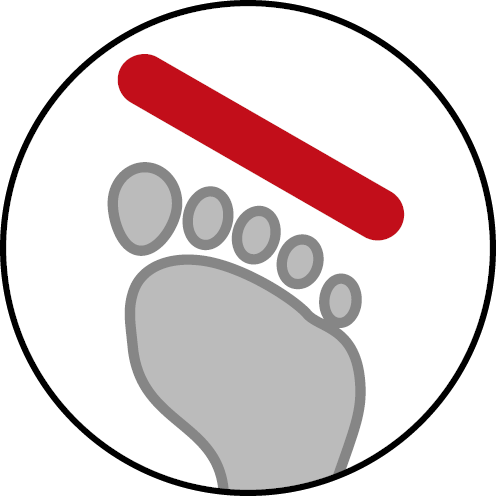
Egyptian
Longest big toe, with the others tapering down in length, creating a slanted toe line.
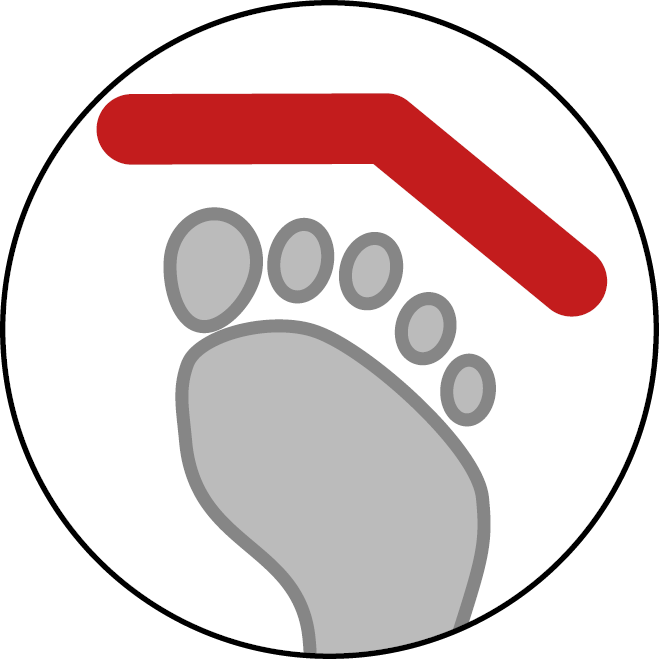
Roman
First three toes are about the same length, creating a straighter toe line.
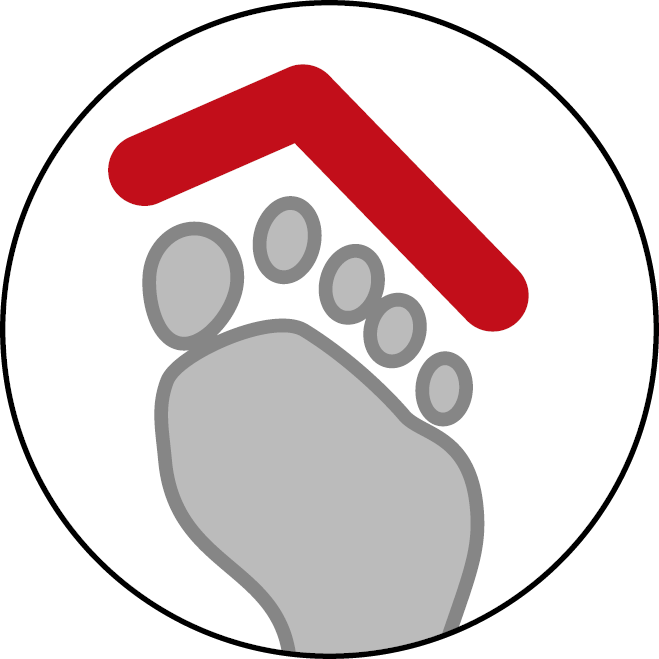
Greek
The second toe is longer than the big toe, giving a pointed line with the second toe sticking out.
Basic Parameters of OCÚN Climbing Shoes
Our portfolio includes a wide range of models designed for different climbing styles and different types of feet. Each model is carefully developed with both specific use and foot biomechanics in mind. The main parameters are: asymmetry, profile, stiffness and midsole, sole type, rubber coverage, and last. Let’s take a closer look at them.
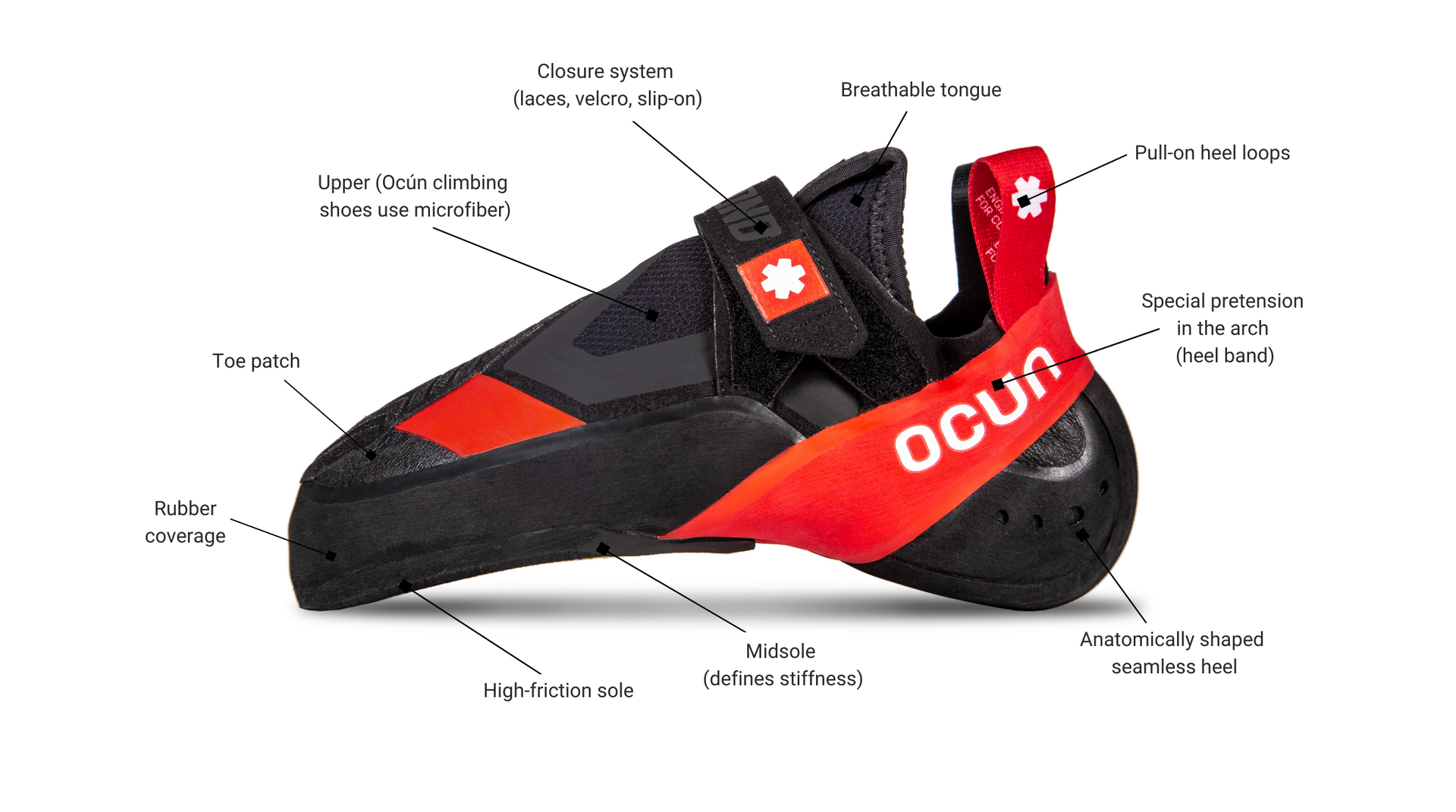
Asymmetry and Profile
Asymmetry and profile have a major impact on how a climbing shoe performs on the wall – and together with the right last, they determine how the shoe fits and how it behaves on small footholds, slabs, or overhangs.
- Asymmetry shows how much the shoe’s axis is curved toward the big toe. Higher asymmetry allows more precise load on the toe tip – ideal for technical climbing and harder routes.
- Profile (the downturn of the arch) is key on steep and powerful routes – it increases efficiency for heel hooking and power transfers to the toe.
ⓘ Climbers who are just starting out, or those who prefer friction climbing, will appreciate a flatter profile and lower asymmetry – the shoe is more comfortable and stable. Advanced climbers often choose aggressive models with higher asymmetry and a strong downturn – for better precision and performance.
Last Types
The last is the foundation that defines the shape and character of a climbing shoe. It is the form on which the entire shoe is built. It determines width, volume, toe angle, and the degree of downturn. Each last is designed for a different foot type and climbing style – that’s why at Ocún, we work with several variations, so that every climber can find their fit.
COMPETITION

A last tuned for competition climbers and maximum performance. The toe shape allows light toe flexion for maximum feel on footholds, the strong downturn supports power transfer to the toe and makes climbing overhangs easier. The heel fits perfectly thanks to a time-tested design. Suitable for narrow to regular-width feet.
EXCENTRIC 2.0

Aggressively downturned last with a concave shape for maximum toe support under load. The asymmetry improves precision, especially on the first two toes. Fits normal to wide feet with a medium-volume heel. An improved version with a heel inspired by the Asymmetrix last.
ASYMMETRIX

Moderately downturned last with a radically shaped toe box and concave profile for toe support under pressure. Strong asymmetry channels power into the big toe. The width suits regular to wide feet with a medium-volume anatomical heel. Ideal for overhanging routes.
ASYMMETRIX PLUS

Wider version of the Asymmetrix last, keeping its moderate downturn and radically shaped, concave toe box for maximum toe support. The anatomically shaped front is designed for more curled toes. Suitable for wide feet and strong performance in overhangs.
RADICAL

Aggressively downturned last with medium asymmetry and an anatomically shaped toe box. Provides enough room for the toes, while the low-volume heel ensures a precise fit for narrower feet. Based on a study of the feet of fit, performance-oriented climbers.
ALL-ROUND

A versatile last combining performance and comfort. Medium asymmetry and a neutral arch ensure all-day climbing comfort. The roomy toe box fits normal to wide feet, and the heel design is based on the proven Asymmetrix model.
SLIMTIX

Designed for climbers with a low instep and a slim heel. The medium asymmetry and relatively flat profile provide precision and support in a variety of climbing styles. Thanks to its overall low volume, the SLIMTIX transfers maximum power to the toe and offers high sensitivity on the rock.
ADVANTIC

Comfortable last for versatile, intermediate performance climbing shoes. Low asymmetry and average volume in both instep and heel ensure comfort. The slightly downturned shape helps boost performance. Best suited for Greek-type feet.
ENTRANTIC

Comfortable last for beginners, with slight asymmetry and elements borrowed from performance models. The big toe points slightly inward, and the anatomically shaped heel provides solid support. Suitable for normal to wide feet.
BABY

Flat last with slight asymmetry. The toe box is shaped for the comfort of all toes without compromising the shoe’s technical features. The last width and heel design follow orthopedic requirements for children’s feet.
Sole, Grip, and Rubber Coverage
The sole (the “sticky rubber”) provides the main contact with the rock. The key factor is grip – the ability of the sole to literally “stick” to the surface.
- At Ocún we mainly use our own rubber compounds CAT (Climbing Adhesion Technology) – tuned according to the type of shoe and climbing style. We mark them with a friction coefficient of 1.5, 1.1, and 1.0.
- Some selected models also feature Vibram XS Grip – a proven rubber with excellent grip and outstanding performance on edges and small footholds.
Rubber coverage (randing) protects the upper and helps with toe hooking or foot jamming in cracks.
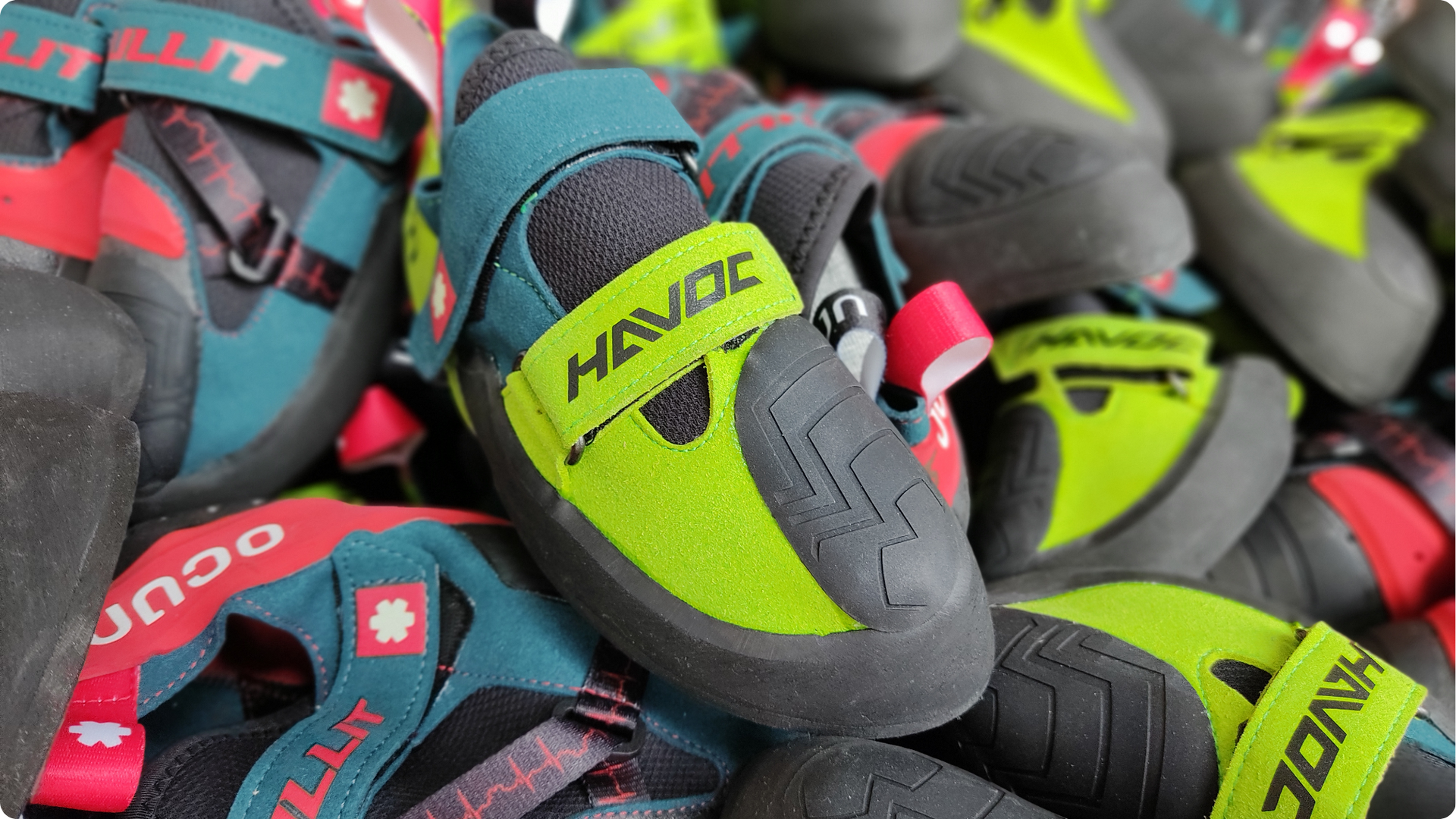
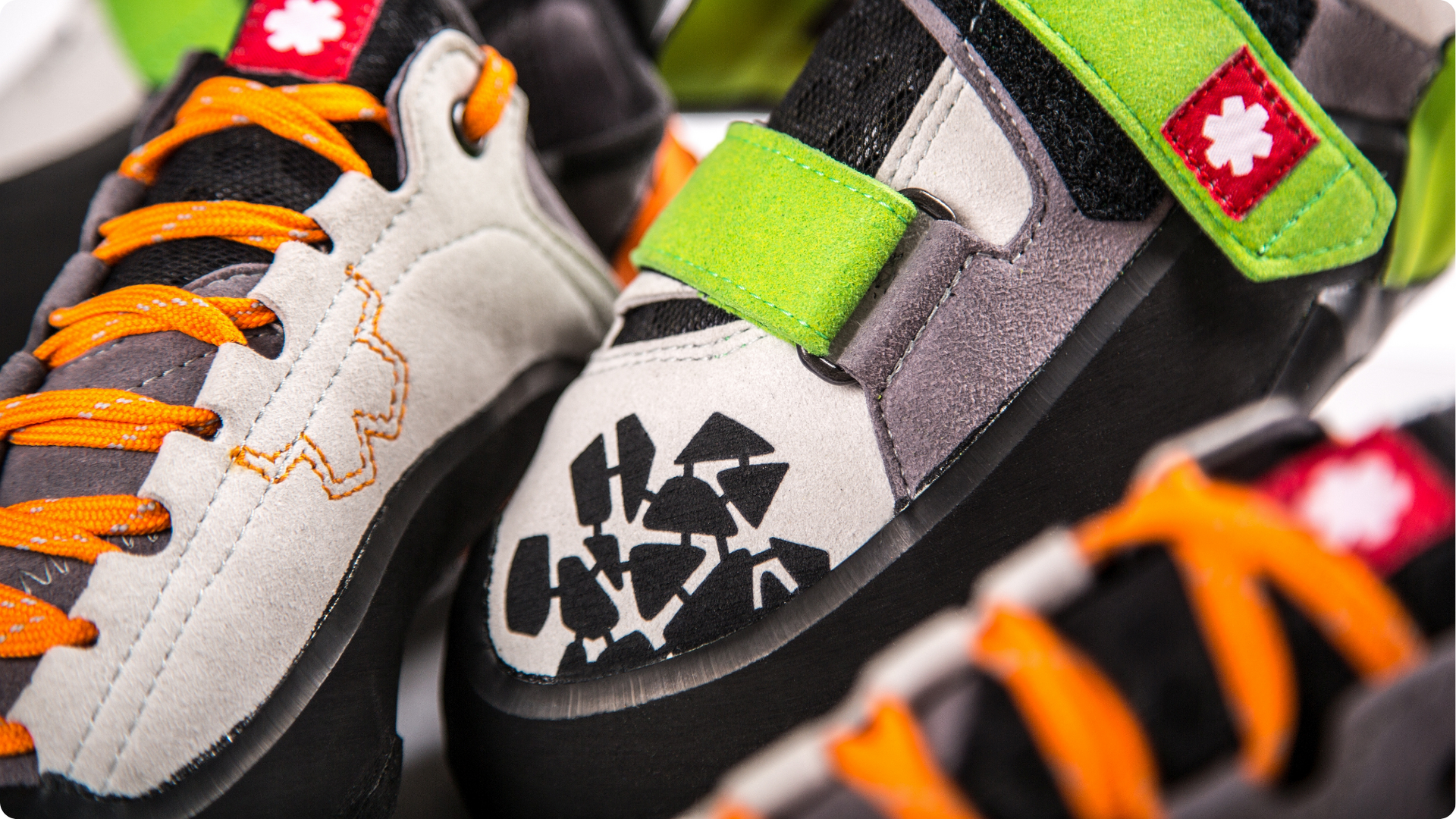
Stiffness, Midsole, and Technologies
A good climbing shoe needs to be stiff enough to support the climber’s weight on small footholds, while still sensitive enough to keep precise contact with the rock.
At Ocún we use these technologies:
- 3D Shape midsole – ergonomically shaped midsole that effectively transfers power from the big toe to the tip of the shoe and supports a stable stance on holds without the toes rolling sideways.
- 3 Force System – a patented system that increases torsional stability and prevents the shoe from twisting under load and losing the effective power transfer to the toe.
Models like OZONE or OZONE HV make full use of these technologies – that’s why they are chosen even by elite climbers, such as Ao Yurikusa.
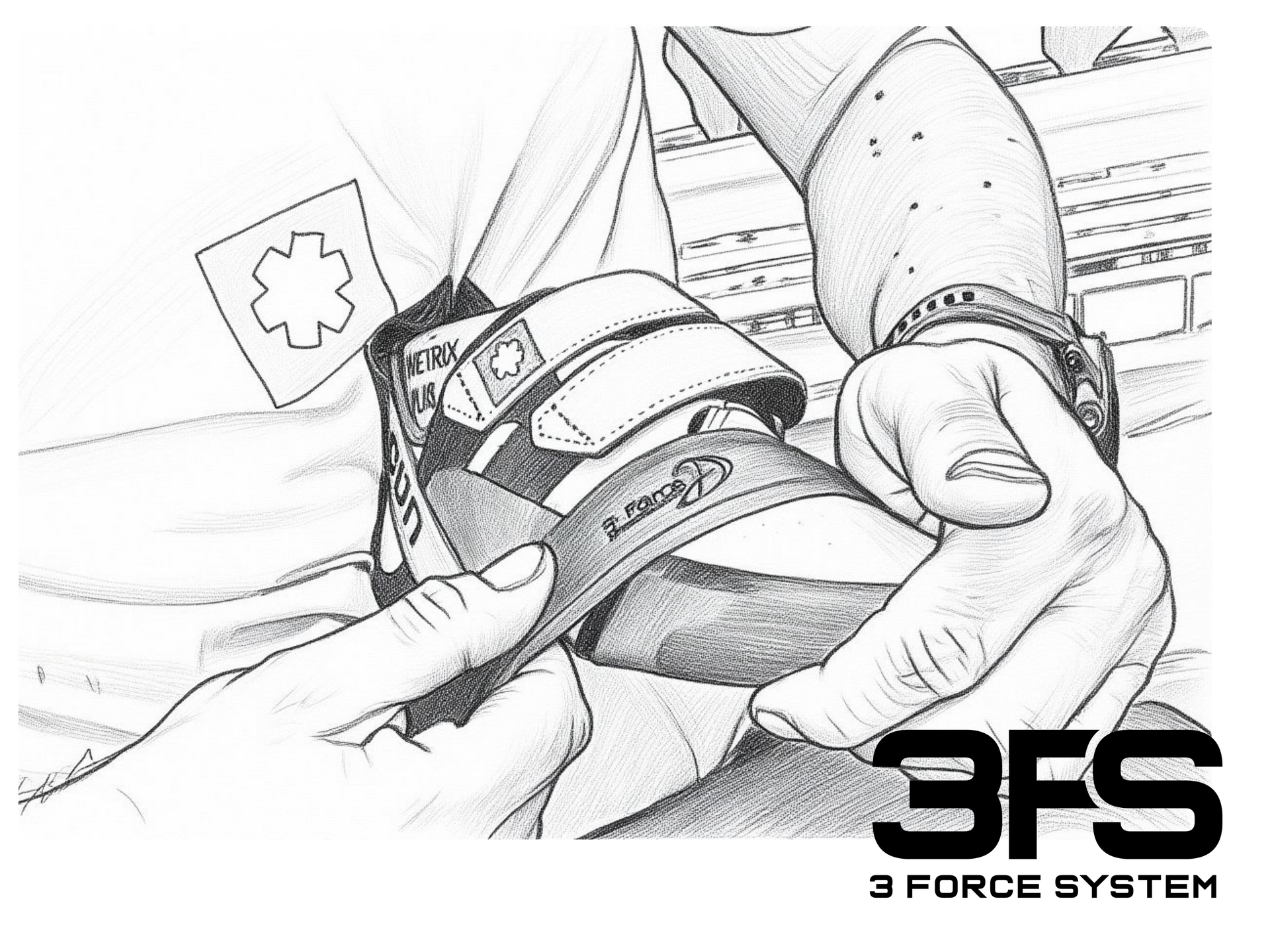
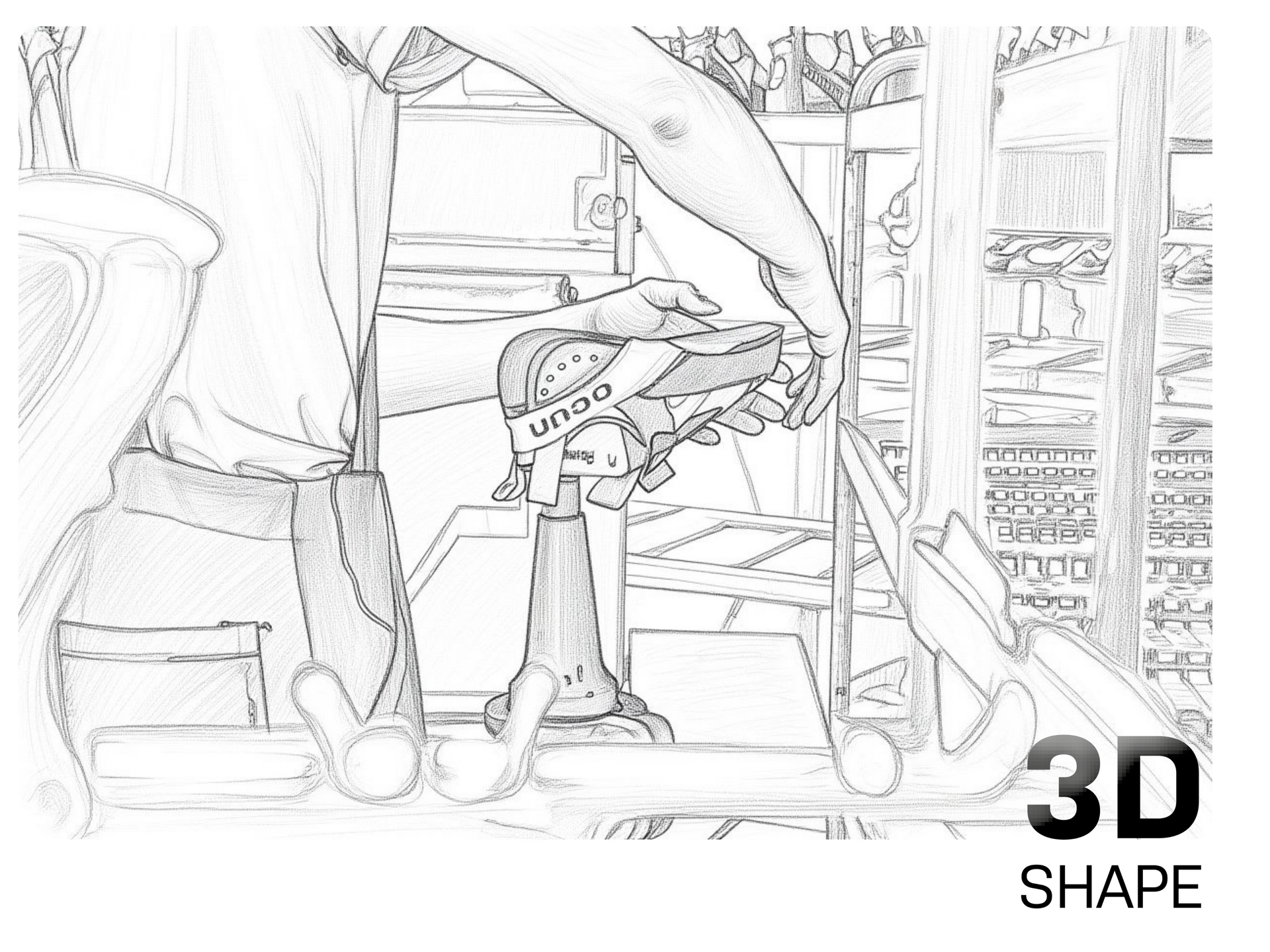
Closure Systems
- Velcro – fast and practical closure, ideal for sport climbing and bouldering.
- Laces – allow precise tightening to match foot shape, also suitable for longer routes.
- Slip-on – comfortable and quick to put on, ideal for training, bouldering, or route climbing.
Upper
The upper of a climbing shoe is the material in direct contact with the foot – it can be synthetic, leather, or a combination of the two. At Ocún we use synthetic Microfiber, which provides high durability and breathability. It also maintains its shape and color over time without deforming.
Additional Features
Vegan materials
Most of our models are fully synthetic, meaning no animal-derived materials are used in their production.
Seamless heel
In 1994, Ocún (then Rock Pillars) introduced the first seamless heel on the market, which was later adopted by other climbing shoe brands. This system minimizes pressure points and blisters, ensuring greater comfort during long climbs.
How to Choose Climbing Shoes
When choosing climbing shoes, the most important factor is knowing what style of climbing you’ll use them for. Indoors, on rock, in the mountains, or for bouldering – each requires a slightly different shape and construction. For beginners, start with more comfortable, flatter models – ideally in your regular street shoe size. Over time, try smaller and more technical shoes, which offer greater precision and feel on tiny footholds.
The heel should fit snugly but not press painfully on the Achilles tendon. The big toe should be slightly bent, but not painfully crammed. Always try shoes barefoot or with thin socks, ideally several times. They loosen up slightly after the first wear, and your foot size can change throughout the day (swelling). Take your time when choosing. The right size and shape are key for both comfort and performance.
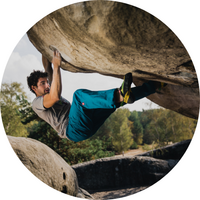
Bouldering
Snug heel, rubber toe patch, softer and more precise.
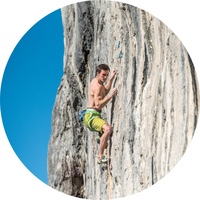
Sport climbing
Depends on wall angle: softer and more aggressive for overhangs, stiffer for vertical walls.
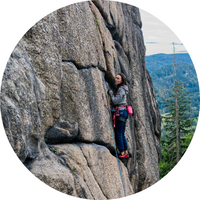
Multi-pitch and alpine
Comfortable, flatter, even slightly loose.
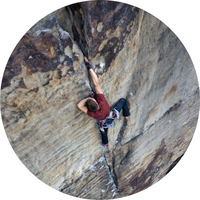
Cracks
Ideally mid-cut construction, reinforced toe, comfortable fit
How to Care for Your Climbing Shoes
Proper care extends the lifespan of climbing shoes and keeps them performing well. Whether you climb several times a week or only occasionally, it’s worth following a few simple rules:
- ➤ After every climb, air them out in a dry, ventilated place away from direct sunlight (even if they don’t feel damp).
- ➤ Don’t wash them in the washing machine or dry them on a radiator. At most, wipe them with a damp cloth and then dry them thoroughly.
- ➤ For approaches or belaying, switch into comfortable shoes – this saves the rubber and your feet.
- ➤ Don’t crush the heels by slipping them halfway on (e.g. when belaying) – it reduces the life of the rubber and the construction.
- ➤ To prevent odor, climb in thin socks or use special shoe sprays after your climb.
- ➤ Storage: keep shoes in a dry place out of direct sunlight, ideally in a breathable bag (e.g. fabric pouch, not a plastic bag).
With proper care, climbing shoes will last longer, keep their shape, and deliver better performance and comfort.
Final Recommendation: How to Find the Right Pair?
Choosing climbing shoes is not about what’s “the best” on the market – but about what fits you best. Consider:
- ☑ Foot and toe shape
- ☑ Climbing style (indoor, bouldering, multi-pitch, etc.)
- ☑ Level and frequency of climbing lezení
- ☑ Comfort vs. performance – find your own balance
Try different models. In stores that work with Ocún, staff can often help with sizing and recommend models based on your foot shape. If you’re still unsure, check out our full shoe collection or visit one of our retailers. Because one thing is certain:
“A well-fitting pair of climbing shoes can completely change your climbing experience.”
